The earliest map of the State of Florida, published in Florida.
Finely executed map of Florida, published in Jacksonville in 1867 by Columbus Drew and printed by Julius Bien in New York.
Drew's map is perhaps the first large format map of Florida after the end of the Civil War and captures the state at the beginning of Reconstruction. The Pensacola & Georgia Railroad and the Florida and Atlantic Railroad are shown, along with a Projected line of an unnamed railroad line from Pensacola to Quincy. Further south, a line is shown extending to Levy County.
Traversing down the center of the state, a road extens from Waldo to Ocala and then on to Tampa, with a road then extending from Tampa to Charlotte Harbor. A few early placenames appear in South Florida, although much of Dade County is referred to as Indian Hunting Ground.
Drew makes a credible depiction of the state of the General Land Office's Surveys in Florida, noting:
- Townships under contract
- Townships with only their exterior lines surveyed
- Townships which are partly sectioned
- Townsnhips only partly "Townshiped"
- Areas which are proposed for survey
US Land Office in Tallahassee is notes, as are the Battle Fields of Olustee and Natural Bridge.
The 1867 edition is the second edition of the map and the first with this title, with subsequent editions published in 1870, 1874, 1875, 1876, 1877, and 1884.
In describing his 1870 edition of the map, Rumsey noted:
This is the earliest issue of this map that we have seen, earlier than any listed in Phillips or Fitzgerald. Compared to our 1876 edition (see #5040) there is far less railroad development shown on the map and the railroads are not listed to the right of the Florida Peninsula, as they are on the 1876 issue. Julius Bien is credited as engraver and printer, which is removed on the 1876 edition. There is no copyright notice. Drew's map is probably the only pocket map of Florida published in Florida in the 19th century. Not much is known about Drew - he is listed on the map as "Bookseller & Stationer" in Jacksonville. . . .
Columbus Drew
The Drew family was one of the most important early famlies in Jacksonville, Florida.
Columbus Drew (1820 - 1891) was a Florida politician, writer, bookseller, publisher and printer active in the mid to late 19th century. Born in Washington DC, he was educated in journalism and printing. He started working as a proofreader for the National Intelligencer, ulimately rising to editor of the American by 1847, where he became acquainted with a number of leading political figures. In this period, he was persuaded by Whig candidate E. Carrington Cabell to relocate to Jacksonville to take over the publication of the Florida Republican, the state's leading Whig publication.
Drew relocated from Washington DC to Jacksonville, Florida in 1848, where he started work with The Florida Republican. The newspaper plant was destroyed in 1854. The following hear, he opened the Columbus Drew Stationery & Printing Company in 1855.
During the Civil War, Drew served in the Confederate Treasury Department in Richmond, Virginia. In 1862, Horace Drew oversaw the business for his father until the family was forced to leave Jacksonville after Union forces captured the city. After the war, Drew returned to rebuild his business along with his son Horace. In 1876, Drew sold the business to his son after he was appointed Florida Comptroller and the business was renamed "H. Drew".
In 1881, Horace's brother William B. became a full partner of the firm and the named was changed to "H. Drew and Brother" and again in 1893 to "H. & W. B. Drew Company". The Great Fire of 1901 destroyed the plant and a new two-story was constructed less than a year later. In 1909, a third floor was added and designed by famed architect Henry J. Klutho.
Rarity
Drew issued his first map of Florida in 1856. We note no examples of the 1856 offered for sale since the Eberstadt Catalog of 1856. The 1867 Drew is extremely rare on the market. The last example appeared at Swann Galleries in December 2006 (Sale 2098, Item 139). Prior to that example, Eberstadt catalogued and example in 1950.









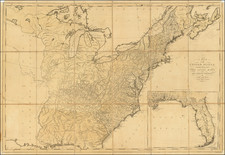
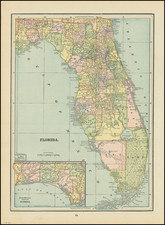
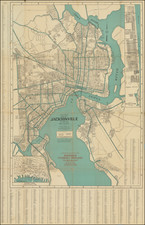
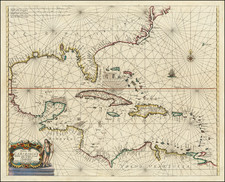
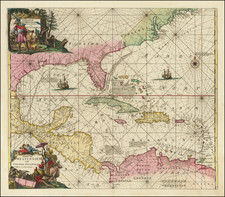
![(Miami Photographs) [Collection of 18 original photographs of Miami during the Florida Land Boom of the 1920s; including early airplanes on the Miami waterfront]](https://storage.googleapis.com/raremaps/img/small/87176.jpg)